This is a workaround for this problem:
\version "2.19.15"
%%%%%%%%%%%%%%%%%%%%%%%%%%%%%%% COPY ALL THIS BELOW %%%%%%%%%%%%%%%%%%%%%%%%%%%%%%%
% repeatBracket snippet
% will add .----Nx----. above a bar, where N is the number of repetitions
% based on the wonderful spanner by David Nalesnik (see: http://lists.gnu.org/archive/html/lilypond-user/2014-10/msg00446.html )
#(define (test-stencil grob text)
(let* ((orig (ly:grob-original grob))
(siblings (ly:spanner-broken-into orig)) ; have we been split?
(refp (ly:grob-system grob))
(left-bound (ly:spanner-bound grob LEFT))
(right-bound (ly:spanner-bound grob RIGHT))
(elts-L (ly:grob-array->list (ly:grob-object left-bound 'elements)))
(elts-R (ly:grob-array->list (ly:grob-object right-bound 'elements)))
(break-alignment-L
(filter
(lambda (elt) (grob::has-interface elt 'break-alignment-interface))
elts-L))
(break-alignment-R
(filter
(lambda (elt) (grob::has-interface elt 'break-alignment-interface))
elts-R))
(break-alignment-L-ext (ly:grob-extent (car break-alignment-L) refp X))
(break-alignment-R-ext (ly:grob-extent (car break-alignment-R) refp X))
(num
(markup text))
(num
(if (or (null? siblings)
(eq? grob (car siblings)))
num
(make-parenthesize-markup num)))
(num (grob-interpret-markup grob num))
(num-stil-ext-X (ly:stencil-extent num X))
(num-stil-ext-Y (ly:stencil-extent num Y))
(num (ly:stencil-aligned-to num X CENTER))
(num
(ly:stencil-translate-axis
num
(+ (interval-length break-alignment-L-ext)
(* 0.5
(- (car break-alignment-R-ext)
(cdr break-alignment-L-ext))))
X))
(bracket-L
(markup
#:path
0.1 ; line-thickness
`((moveto 0.5 ,(* 0.5 (interval-length num-stil-ext-Y)))
(lineto ,(* 0.5
(- (car break-alignment-R-ext)
(cdr break-alignment-L-ext)
(interval-length num-stil-ext-X)))
,(* 0.5 (interval-length num-stil-ext-Y)))
(closepath)
(rlineto 0.0
,(if (or (null? siblings) (eq? grob (car siblings)))
-1.0 0.0)))))
(bracket-R
(markup
#:path
0.1
`((moveto ,(* 0.5
(- (car break-alignment-R-ext)
(cdr break-alignment-L-ext)
(interval-length num-stil-ext-X)))
,(* 0.5 (interval-length num-stil-ext-Y)))
(lineto 0.5
,(* 0.5 (interval-length num-stil-ext-Y)))
(closepath)
(rlineto 0.0
,(if (or (null? siblings) (eq? grob (last siblings)))
-1.0 0.0)))))
(bracket-L (grob-interpret-markup grob bracket-L))
(bracket-R (grob-interpret-markup grob bracket-R))
(num (ly:stencil-combine-at-edge num X LEFT bracket-L 0.4))
(num (ly:stencil-combine-at-edge num X RIGHT bracket-R 0.4)))
num))
#(define-public (Measure_attached_spanner_engraver context)
(let ((span '())
(finished '())
(event-start '())
(event-stop '()))
(make-engraver
(listeners ((measure-counter-event engraver event)
(if (= START (ly:event-property event 'span-direction))
(set! event-start event)
(set! event-stop event))))
((process-music trans)
(if (ly:stream-event? event-stop)
(if (null? span)
(ly:warning "You're trying to end a measure-attached spanner but you haven't started one.")
(begin (set! finished span)
(ly:engraver-announce-end-grob trans finished event-start)
(set! span '())
(set! event-stop '()))))
(if (ly:stream-event? event-start)
(begin (set! span (ly:engraver-make-grob trans 'MeasureCounter event-start))
(set! event-start '()))))
((stop-translation-timestep trans)
(if (and (ly:spanner? span)
(null? (ly:spanner-bound span LEFT))
(moment<=? (ly:context-property context 'measurePosition) ZERO-MOMENT))
(ly:spanner-set-bound! span LEFT
(ly:context-property context 'currentCommandColumn)))
(if (and (ly:spanner? finished)
(moment<=? (ly:context-property context 'measurePosition) ZERO-MOMENT))
(begin
(if (null? (ly:spanner-bound finished RIGHT))
(ly:spanner-set-bound! finished RIGHT
(ly:context-property context 'currentCommandColumn)))
(set! finished '())
(set! event-start '())
(set! event-stop '()))))
((finalize trans)
(if (ly:spanner? finished)
(begin
(if (null? (ly:spanner-bound finished RIGHT))
(set! (ly:spanner-bound finished RIGHT)
(ly:context-property context 'currentCommandColumn)))
(set! finished '())))
(if (ly:spanner? span)
(begin
(ly:warning "I think there's a dangling measure-attached spanner :-(")
(ly:grob-suicide! span)
(set! span '())))))))
\layout {
\context {
\Staff
\consists #Measure_attached_spanner_engraver
\override MeasureCounter.font-encoding = #'latin1
\override MeasureCounter.font-size = 0
\override MeasureCounter.outside-staff-padding = 2
\override MeasureCounter.outside-staff-horizontal-padding = #0
}
}
repeatBracket = #(define-music-function
(parser location N note)
(number? ly:music?)
#{
\override Staff.MeasureCounter.stencil =
#(lambda (grob) (test-stencil grob #{ #(string-append(number->string N) "×") #} ))
\startMeasureCount
\repeat volta #N { $note }
\stopMeasureCount
#}
)
%%%%%%%%%%%%%%%%%%%%%%%%%%%%%%% ...UNTIL HERE %%%%%%%%%%%%%%%%%%%%%%%%%%%%%%%
{
\repeatBracket 7 {c'1}
\repeatBracket 32 {d' g}
\repeatBracket 14 {e' f g}
\repeatBracket 29 {f' a bes \break cis' e''}
\repeatBracket 1048 {g'1}
}
This code above gives the following result:
 ]
]
This solution was not created by myself, but sent to me by David Nalesnik, from lilypond-user mailing list. I just would like to share it here in case someone would need it as well. I've made just some very minor adjustments to what David sent me.


 ]
]